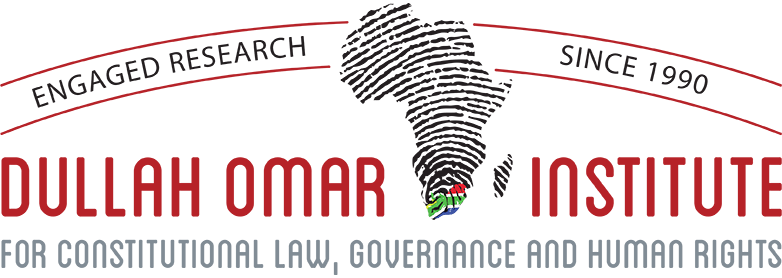Women’s representation in the upcoming Local Government Elections
A previous article in the Local Government Bulletin provided insight on the available data on womens’ representation in local government elections for the period 1995-2016. This is a good starting point to determine how women are faring. Since the first democratic local government election in 1995 there has been an increase in the percentage of women candidates in local government elections. Their representation is greater as proportional representative (PR) councillors compared to ward councillors. Inspite of this, to date women remain under-represented. This is evident from the 2000, 2006, 2011 and 2016 elections. As an example, in 2016, women constituted only 48 percent of PR councillors and merely 33 percent of ward councillors.
In considering the run-up to the 2021 elections, mayoral candidates are amongst the most notable candidates to be nominated by their parties. Two of the strongest political parties however do not show a clear commitment to gender parity. First, the African National Congress (ANC) chose not to announce its mayoral candidates and this lack of transparency has not gone unnoticed. Factions within the party, have vocalised their discontent. The convenor of the ANC Youth League (ANCYL), Nonceba Mhlauli, demanded the national leadership to include the ANCYL in the interviews with mayoral candidates. Second, the Democratic Alliance (DA) have announced their mayoral candidates in five of the major cities of which only two are women. This signifies a continuity with the DA’s policy that does not promote gender quotas in their constitution.
Gender activists are quick to point out that women’s representation is the worst at local government level compared to the provincial and national elections. Women account for a higher number of voters than men. Again, the statistics presented by the IEC for the 2021 elections confirm that women have registered to vote in higher numbers than men:
- Eastern Cape:44.83 % for men and 55.17 % for women
- Free State: 44.68 % for men and 55.32 % for women.
- Gauteng: 47% for men and 52.28 % for women
- KwaZulu-Natal: 43.54 % for men and 56.46% for women
- Limpopo: 40.95 % for men and 59.05 % for women
- Mpumalanga: 45.12 % for men and 54.88 % for women.
- North West: 47.1 % for men and 52.9 % for women.
- Northern Cape: 46.32 % for men and 53.68 % for women.
- Western Cape: 44.87 % for men and 55.13 % for women.
There is no doubt that across the country women have consistently accounted for higher registration numbers. It is very difficult to reconcile why women continue to be underrepresented particularly at the local level. Before, discussing this matter it is useful to turn to the guiding principles on women’s leadership and political participation.
Guiding principles on women’s political participation
The right to vote is one of the core values that underpin South Africa's democracy. Section 1(d) of the Constitution of the Republic of South Africa provides for universal adult suffrage, a national common voters roll, regular elections and a multi-party system of democratic government, to ensure accountability, responsiveness and openness. The Constitution also guarantees women the freedom from any form of discrimination based on their sex. In addition, the Constitution emphasises the need for substantive equality.
Women must not only be seen to be treated equally but must actually be progressively promoted to have an equal footing with men. Equality is defined to include, the full and equal enjoyment of all rights and freedoms and the state must promote equality through legislative and other measures. Section 19 of the Constitution enshrines the right to political participation. It confirms the right to make political choices; to enjoy free, fair and regular elections and the right to vote and stand for public office. The Constitution does not provide for quotas to ensure adequate representation of women in elected public bodies, nor are any legal quotas established for national or provincial elections. The Constitution does, however, create an enabling framework in which women’s equal participation can be realised. South Africa is also a signatory to many international and regional treaties that promote the rights of women. However, women continue to be confronted with barriers that prevent them from fully enjoying their political rights.
Lastly, the electoral system for local government is regulated in at least four different statutes, the Electoral Act 73 of 1998, the Local Government: Municipal Structures Act 117 of 1998, the Local Government: Municipal Electoral Act 27 of 2000 and the Local Government: Municipal Systems Act 32 of 2000. The Municipal Structures Act, for example, states that “[e]very party must seek to ensure that fifty percent of the candidates on the party list are women and that women and men candidates are evenly distributed through the list”. These acts together with the guiding principles in the Constitution require that women have fair representation and participation in the local government elections.
The socio-political context
The widespread poverty in poor communities, inadequate access to basic services and a number of violent and other ‘service delivery protests’ and violent political campaigning often mark the run-up to the elections. The impact of Covid-19 resulted in escalating levels of gender-based violence as well as disillusionment with local government. During the pandemic perceptions of local government as corrupt, inefficient, and factionalist grew. These factors all tie in with the issue of women’s political representation and participation. Apart from being hardest hit by the economic downturn, women have suffered greater levels of food insecurity, access to basic services and violence- particularly gender-based violence. The reported incidence of political violence that broke out in Inanda (KwaZulu-Natal) included the killing of three mothers while attending a meeting to nominate a ward councillor candidate for the ANC.
The above example illustrates the volatile environment in which women must pursue their political ambitions. Women are discouraged from participating in the political affairs of their communities if their safety is threatened. Although women continue to carry a heavier burden compared to men in caring for and supporting their families’ needs, men continue to dominate political representation at the grassroots level. One of the main factors attributed to this is that patriarchal structures continue to dominate. The result is that women’s needs are often poorly represented because the particular preferences and circumstances of women have not been considered.
Gender activists assert that political parties must address the systemic discrimination within the political party structures. And, women representation will advance women’s access to basic services and generally - improved quality of life. There is no conclusive evidence, however, that supports this view. In fact, descriptive equality has not always translated to substantive equality, or a meaningful improvement in women’s lives.
Even if the representation of women is equalled to men it may not result in the direct improvement of women’s lives. The question then is, whether gender representation in the local government elections remains significant for women. The simple answer is yes. There cannot be a reality where women, who make up the majority of voters, remain under-represented. From a gender standpoint, the positive influence that women leaders have is not always quantifiable but this does not mean their contribution should be underestimated.
Often the contribution that women make in society is not fully appreciated. As an example, previously economic data failed to take into account women’s contribution towards the global economy for their ‘essential work’ (in the household) and (in the informal economy). Gender activists then pushed for alternative accounting systems that would address this problem. The purpose of this analogy is to illustrate that a lack of data does not necessarily nullify the potential that women councillors may fulfil. As an example, a study undertaken in 159 developing countries in Africa, found that countries with a higher share of women parliamentarians are more likely to pass comprehensive laws and gender-sensitive policies on sexual harassment, rape, divorce and domestic violence. If one applies these findings within the local government context it could mean that a higher share of women councillors at the local level may enable greater gender mainstreaming in the planning, budgeting, implementation, monitoring and evaluation, and audit of public services. Particularly, interesting is the report submitted by the Commission for Gender Equality to Parliament in March 2021. It found a lack of:
- resources and willingness to support gender mainstreaming in local government;
- gender transformation policies and plans;
- opportunities to increase the percentage of women in the workforce and to eradicate barriers to women’s entry; and
- representation of women in decision-making positions.
Perhaps, other methods need to be developed to evaluate women’s contribution in political leadership at the local government level. This is particularly important given the submission by the Commission for Gender Equality that the public are more disappointed in women for not advancing gender equality than men, and also that women are often held to a higher standard than men. These practices discriminate against women.
Thus far, it has been argued that women have to overcome multiple barriers in the party structures to be listed as candidates at the ward level because political party structures are still very much male-dominated. Physical violence and intimidation towards women have been cited as some of the reasons for women choosing to abstain from running as political candidates. Often when women do participate, they are faced with many obstacles in taking up leadership roles. But this status quo simply cannot go ahead without interventions being put in place to mitigate these barriers.
Failing to realise gender equality at the local level of governance and decision-making results in a lack of democracy because a diverse group makes better decisions. This is particularly true when it comes to representing the interests of women at the local level which influences policies in housing, transport, local economic development, basic services, infrastructure, street lighting, street trading, and land-use planning. Women’s equal participation and representation in local decision-making processes is critical for prioritizing women’s practical needs and issues in local governments’ agendas and for localizing the Sustainable Development Goals (SDGs). Thus gender-balanced local councils may be an important step in helping to attain better services for women.
The way forward
The Constitution, the national laws (such as the Municipal Structures Act) expect women to have fair representation and participation in the local government elections. This is also in line with South Africa’s binding commitments to international and regional treaties. Despite the legal expectation of gender parity, political parties consistently fail to live up to these aspirations. Women not only account for fewer PR (proportional representation) candidates than men but are markedly under-represented in the ward elections.
Whether women feel free to contest in the 2021 municipal ward elections is under scrutiny since at least 14 people have so far been murdered in the run-up to the November 1 polls. Given the constitutional mandate, the state, as well as political parties, must put in place mechanisms that empower women to freely participate in public political meetings, rallies or other political events.
Given the statistics on registered voting numbers, it would be interesting to observe how many women will contest as ward candidates. Even more significant, what will the 2021 local government elections hold for women’s overall performance. Will gender parity be achieved?
Voters must realise their agency in making electoral choices. If the majority of voters are women, this means that their vote can certainly influence and shape the outcomes of the local government elections. Shifting, voters perspectives and bias towards women in decision making positions must be urgently addressed if gender parity is to be realised.
Moreover, it is argued that political parties must ensure that women are fairly placed in decision-making positions. They must also eradicate party practices that frustrate women’s ability to meaningfully engage in policy choices. Only once these hurdles are overcomed can women candidates be better placed to make decisions that could improve women’s access to service delivery.
By Dr Shehaam Johnstone, Postdoctoral Fellow






